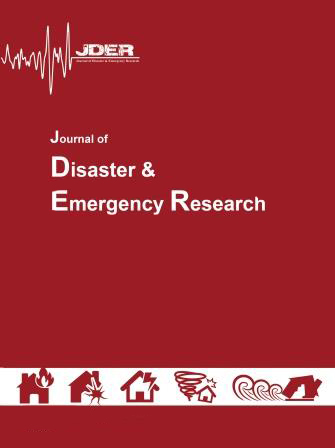Authors
1 Nutrition and Food Security Research Center, Shahid Sadoughi University of Medical Sciences, Yazd, Iran
2 3 Department of Nutrition, Ministry of Health and Medical Education, Tehran, Iran
3 2 Department of Nutrition, School of Public Health, Shahid Sadoughi University of Medical Sciences, Yazd, Iran
Keywords
| T |
In the initial stage of a disaster, the first concern is to ensure that energy and protein requirement is met. In this phase, based on
the latest world food program (WFP) instructions, the estimated average daily energy and protein requirement per person per day are 2100 Kcal and 50 g, respectively
(3). Some factors such as sex and age distribution of population, activity level, environmental temperatures, and pre- exiting malnutrition should be taken into account as soon as possible, to ensure adequate intake of energy/protein. For initial days after the disaster, due to problems in preparing and cooking meals, precooked foods are the most ideal options. The distribution of hot meals may be provided after one week if substructures are not damaged. However, it may take a long time for the disaster managers to be able to provide warm meals to the disaster’s survivors. So, ready-to-eat foods especially canned legumes (lentil, beans and peas) with bread, biscuits, and dates can be used in this situation.
After 2-3 weeks, it is essential to ensure
that the rationed food provide safe levels of micronutrients intake to prevent deficiency diseases. The main specialized functions of nutrition response in disaster are: 1) Rapid
Nutrition Assessment (RNA), 2) quantitative
and qualitative monitoring of food basket, and 3) implementation of nutrition-specific interventions.
Rapid Nutrition Assessment (RNA)
The objectives of an initial RNA are providing information on the nutritional situation, measuring the prevalence of acute malnutrition in children aged 6 to 59 months based on mid-upper arm circumference (MUAC), assessing common infant feeding practice, and identifying cultural habits of food intake, recognizing specific vulnerabilities, and assessing local and national capacity to cope with the situation. RNA can reveal where immediate interventions are needed. It should be continual and also should be followed by a more comprehensive nutrition survey as soon as possible, no later than 3-6 months after occurring a disaster. Based on the finding of RNA, decision is made on an appropriate response.
It includes mix of short and long term interventions (4).
Monitoring of food basket
Food baskets distributed by agencies
and organizations should be monitored quantitatively and qualitatively. Moreover, national guidelines should be taken in to account to ensure sufficient food intake among vulnerable people group such as pregnant/ lactating women, children aged 5 to 59 months, and old people.
Necessary food items for providing nutritional needs of victims are as follow: ready-to-eat supplement food for children under 5 years old, bread especially dried ones, canned legumes/fish/other foods, high energy snacks including halva (sesame butter), peanut butter, nuts, dry fruits, biscuits, and cookies, some fruits such as banana and orange, sterilized long-life milk, and sanitary packaged water.
Implementation of nutrition's specific interventions
Following data gathering, proper interventions should be designed and implemented based on a demonstrated understanding of the situation. The main considerations for the intervention programs being designed in disasters are as follows (5):
- Management of both severe and moderate acute malnutrition
- Micronutrient provision to prevent potential deficiencies
- Special nutritional requirements of vulnerable groups: infants and young children, pregnant and lactating women, and older persons
- Safe and appropriate food preparation and caring activities
- Access to adequate amount clean water and providing of sanitation facilities
- Community-based surveillance to identify nutritional problems related to intra-household distribution
- Nutrition education and counseling for victims
- Nutritional care for groups need special assistance
- Quality control to ensure that food distributed to victims is safe and has appropriate quality
- Logistics and food management

